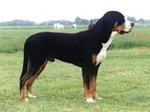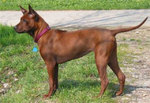
|
Dog wallpapers / Answers /
Answer "What is Hip dysplasia in dogs?" What is Hip dysplasia in dogs?This "What is Hip dysplasia in dogs?" answer was viewed by 6643 visitors. Hip dysplasia – is a problem with the acetabulum of the hip joint, which leads to a significant disruption of the locomotor function of the limb. It is widespread among the dogs of big and giant breeds (German shepherds, Rottweilers, Boxers, Golden Retrievers, etc.). Scientists say that the main cause of hip dysplasia in dogs is their genetic predisposition, but nutrition and physical activities are also worth to note, because they can cause hip dysplasia too. Puppies from the same litter, but from different conditions, can have significantly different levels of dysplasia. That means that not only the genetic predisposition may cause hip dysplasia in dogs. Symptoms of hip dysplasia:
|
|||
|
|
Home | Contacts | Advertise | Terms of Use | DMCA






